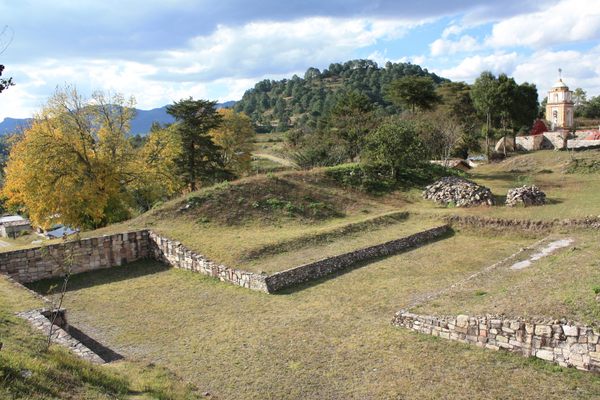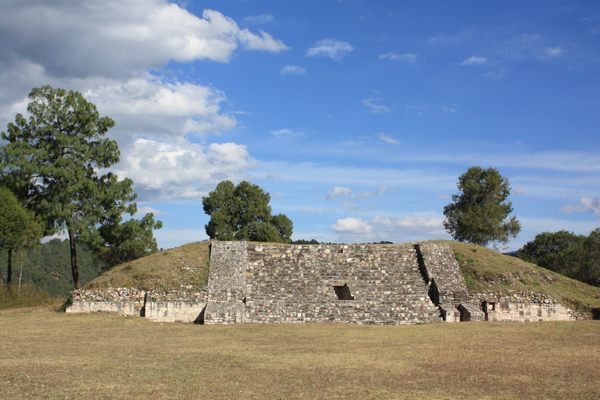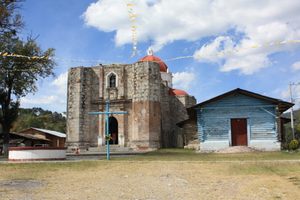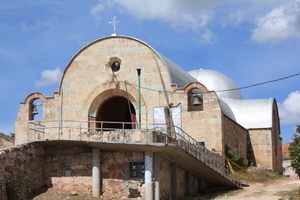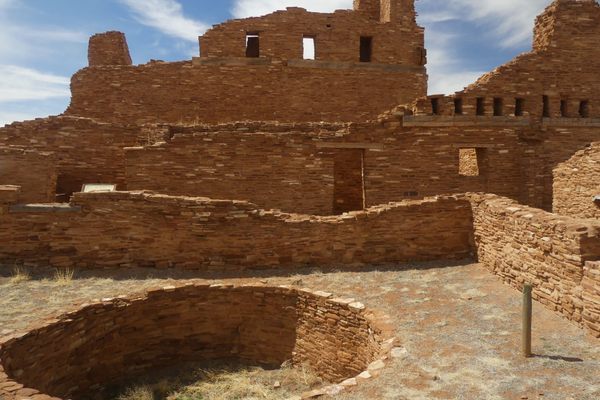About
Huamelulpan is estimated to have been a major population center for nearly a millennium. The city is located on Yucunindaba Hill, a name that translates to "the hill that flew" in the Mixtec language, and was known for its terraced layout. It was established around 400 BC and nearly abandoned circa 600.
Much like the ruins in Zaachila, Huamelulpan shows signs of a merging of Mixtec and Zapotec cultures, though to a lesser extent. The most notable Zapotec contribution found in Huamelulpan is the writing system, which bears strong resemblance to the one found in Monte Albán.
The many hills in the area led to the construction of a system of terraces that allowed Huamelulpan to adapt to the landscape. The site included simple houses with stone foundations where most inhabitants lived, and large stone platforms that made up the public and ceremonial areas. In the lower portion of the site there is a court for a ball game related to a Mixtec ritual.
As was common during the Spanish conquest, the archaeological site of Huamelulpan was also selected as the location atop which the community's Catholic church would be built, in order to establish dominance. The church is dedicated to Saint Martin of Tours, and is the namesake of the modern town itself, San Martín Huamelúlpam. You can find rocks carved by the Mixtec and taken from the ancient city, embedded on its outer walls.
Related Tags
Know Before You Go
As is the case with most placenames with the suffix -pan in Oaxaca, you can find this town spelled as both Huamelúlpam and Huamelulpan. The site is open from Monday to Sunday, 9 a.m. to 6 p.m. Entry to the archaeological site is free as it is located in a public area. It does not feature infrastructure like a visitor's center or toilets (which can still be found in the town center).
Flavors of Oaxaca: Markets, Mezcal & Home-Cooked Meals
A Culinary and Cultural Journey Through Oaxaca.
Book NowCommunity Contributors
Added By
Published
February 10, 2020
